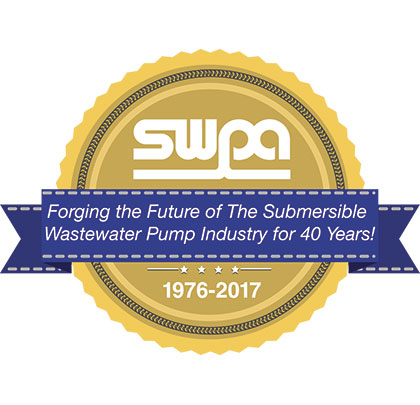Workers in municipal lift stations know how efficient and effective submersibles wastewater pumps are—the workhorses of solids-handling pumps—but other attributes make them a good fit for a range of applications. In this month’s SWPA Insight, Franklin Electric’s Jessie Hinther joins SWPA Executive Director Adam Stolberg to discuss how submersibles wastewater pumps’ hydraulic efficiency, easy maintenance and service, and ability to fit in tight spaces help them earn the reputation of the versatile submersible.
In brief, what applications beyond wastewater handling can benefit from submersibles pumps?
Submersible pumps have many attributes which make them excellent for multiple applications. Compact size, low-noise, serviceability, and solids handling attributes to name a few.
One of the biggest growth areas for submersibles would be grinder pumps used to power small diameter pressurized sewers, especially in areas that are hilly or have rocky terrain. What are some of the advantages submersible grinder pumps make possible that were previously impractical?
Grinder pumps have the ability to reduce solids into a slurry so that they may be pumped long distances. When installed into a low-pressure sewer system, the installer is only required to trench a small diameter line at a depth just under the frost line. This greatly reduces the obstruction to the environment during installation as well as reduces the cost.
What benefits can submersibles bring to the mining industry? We’ve seen submersible employed for dewatering and moving runoff water.
In the mining industry, the movement of water occurs in applications ranging from slurry transfer, abrasive sludge dewatering, mineral processing, chemical/acid dosing, general water supply and/or boosting, and wastewater/tailing transfer. Submersible pumps may be used in several of these applications.
Do submersibles play a role in power generation? If a submersible is installed in a plant, how would that benefit boiler operations or handling runoff?
Feedwater pumps in a boiler operation range in size up to many horsepower and the electric motor is usually separated from the pump body by some form of mechanical coupling. In this application, the pump must generate sufficient pressure to overcome the steam pressure developed by the boiler, which is usually accomplished through the use of a centrifugal pump.
How well can submersibles perform in liquid handling, leakage collection, and other duties in chemical processing and industrial plants?
There are many things about the design of a pump that can be modified to fit the media being pumped. For example, the pump head and impeller design can be modified to be “fish friendly” in an aquaculture application or the sealing system materials can be changed to handle highly acidic liquid in a chemical processing plant. These attributes can help make submersible pumps the right choice for the job.
As one would expect, submersibles excel in marine applications. How are submersibles utilized to dewater vessels, pump bilge, keep dry docks dry, and change water levels?
The use of a dry dock has been around for centuries and has proven to be a very effective method for completing repairs to marine vessels. The addition of the submersible pump to both drain and fill a dry dock has simply made the method much more efficient. It has also added security in the sense that if the water begins to creep back into the dry dock the submersible can be used in a sump application to keep the pit dry.
Submersibles also frequently operate just out of sight in myriad municipal and service applications. What are some of the vital roles these pumps play in essential areas like airports, parking lots, and roadways to recreational locations like theme parks, stadiums, golf courses, and decorative fountains?
Submersible pumps are an integral part in our everyday lives. From handling the infamous “Super Bowl flush,” to the Las Vegas water show at the Bellagio, to the 9/11 National Memorial, they truly enhance our quality of life! ◆
____________________________________________
MODERN PUMPING TODAY, May 2017
Did you enjoy this article?
Subscribe to the FREE Digital Edition of Modern Pumping Today Magazine!
![]()


